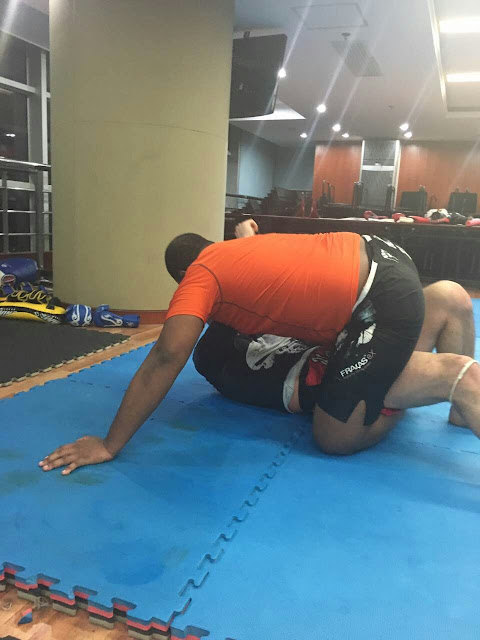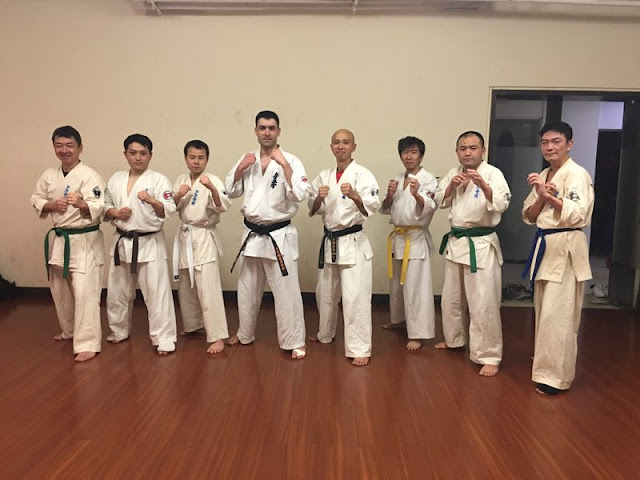Surviving on the ground 101 for Karateka

Let's start by saying that "surviving on the ground" is not the same as "winning a fight on the ground". For countless reasons that I am sure you have already read elsewhere fighting on the ground is not the best of the strategies when your life is at risk. If you had the bad fortune of ending on the ground, be it on top or on the bottom, then your main goal must be to regain your feet. If you have a gentleman like this on top of you preventing you from standing up, then I have some recommendations that, surprisingly, I forgot to include in my book (you got my book and sent me a donation via Paypal, right?). -Cover your face/head at the best of your ability to avoid taking heavy shots that can knock you out. -Keep your neck covered to avoid being chocked out or strangled. -Keep your arms and elbows tight to the body to prevent being caught in armbars and such. -Keep the other guy close to you to disrupt his striking, but, -Create spac













